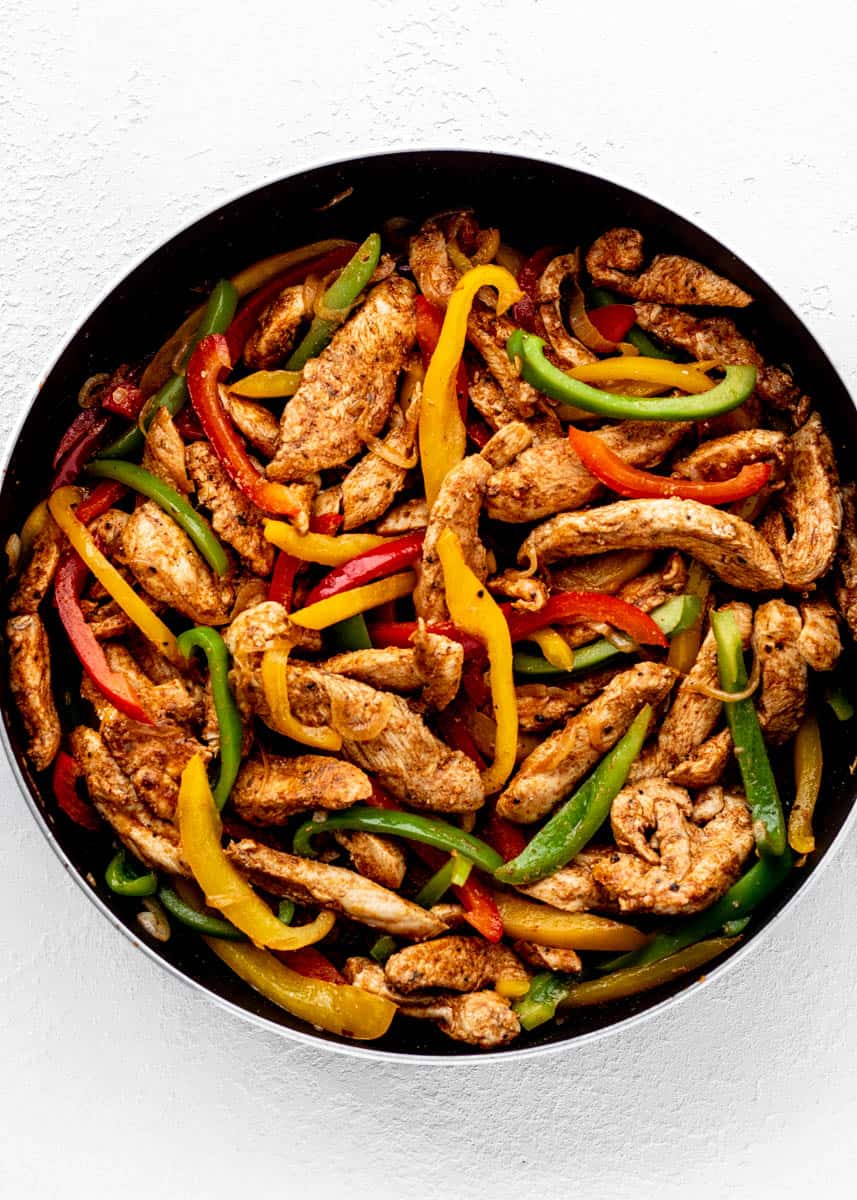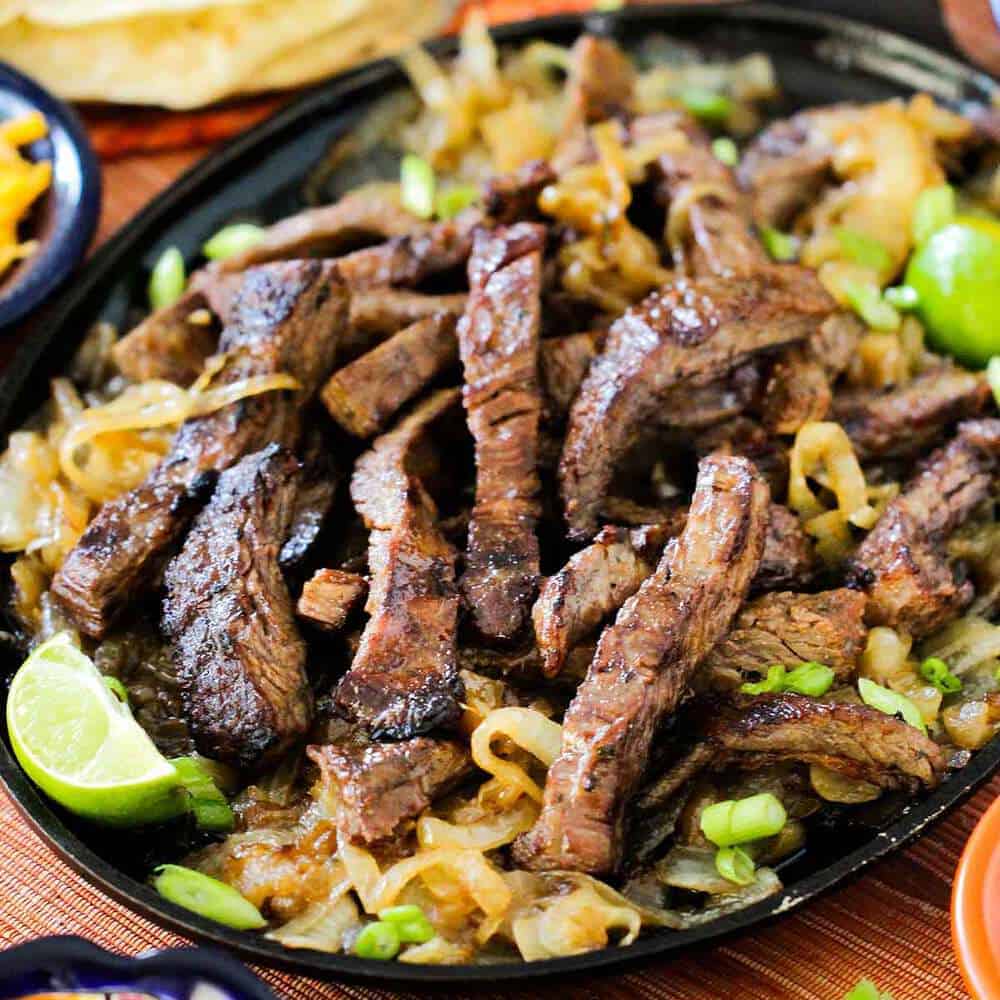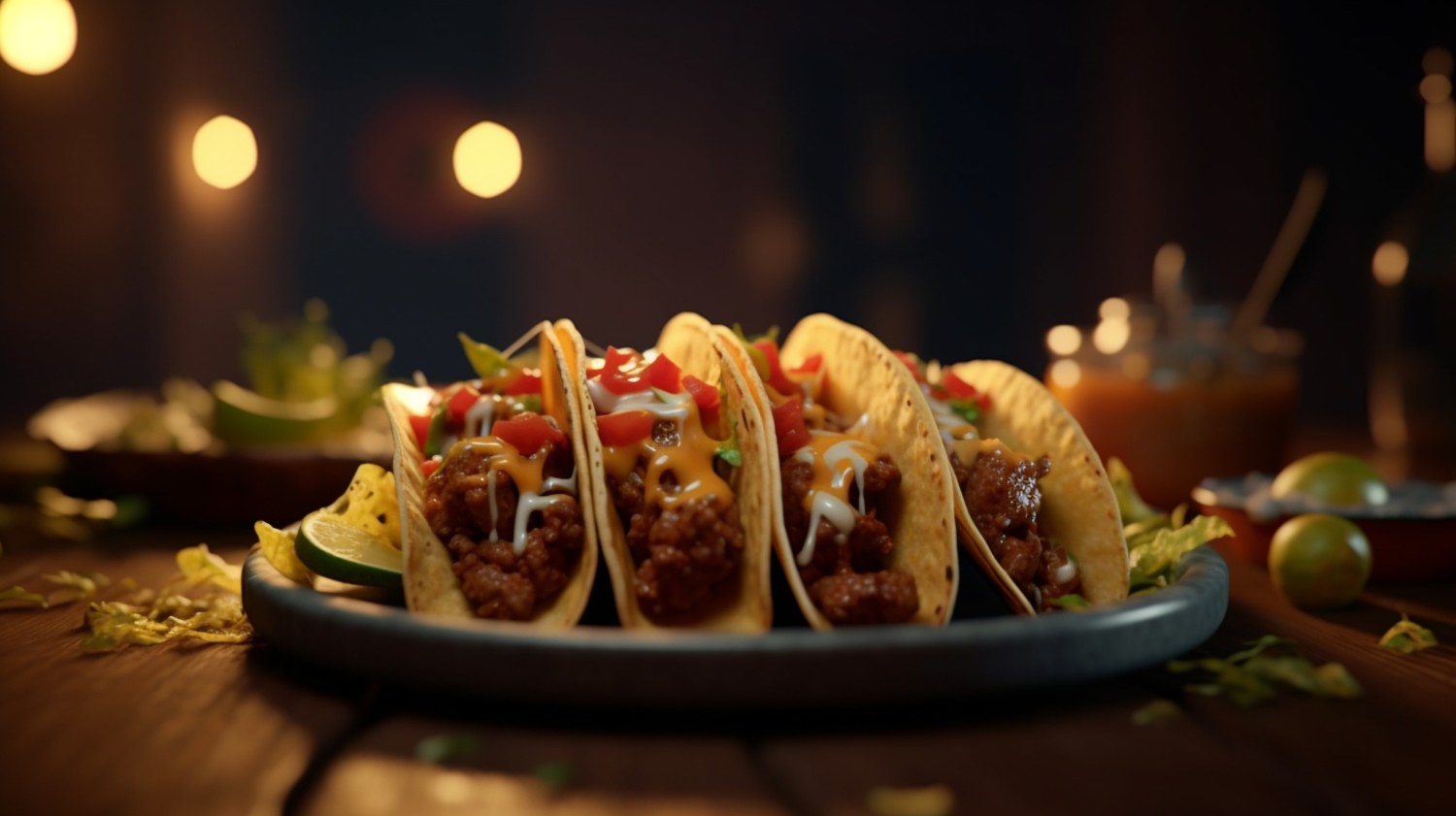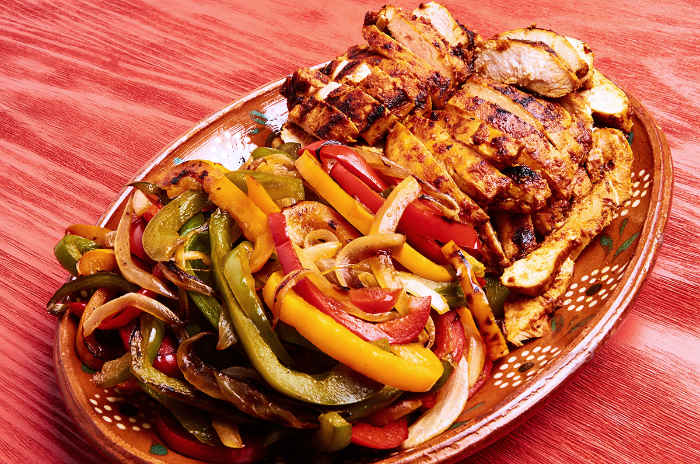Are fajitas truly an authentic Mexican dish, or are they a creation of Tex-Mex cuisine? While often associated with Mexican cuisine, fajitas have roots in the borderlands between the United States and Mexico, where they gained popularity in the mid-20th century.
The word “fajita” originates from the Spanish term “faja,” meaning “strip” or “belt,” referring to the grilled skirt steak traditionally used. Over time, fajitas have evolved to include various meats and vegetables, making them a beloved dish in many cultures.
Despite their debated authenticity, fajitas continue to bring people together around the table, embodying the spirit of shared meals.
Here is there mexican food in russia?
Are fajitas authentic mexican food?
Fajitas are often considered a Tex-Mex creation rather than an authentic Mexican dish. The term “fajita” comes from the Spanish word “faja,” meaning “belt” or “strip,” which refers to the cut of meat typically used—skirt steak.

While grilled meats wrapped in tortillas have a long history in Mexico, the specific preparation and presentation of fajitas as we know them today originated in Texas during the mid-20th century.
In traditional Mexican cuisine, similar dishes might feature marinated meats and vegetables served in tortillas, but the vibrant, sizzled presentation and emphasis on grilling associated with fajitas are distinctive to Tex-Mex culture.
While they have become a popular item in Mexican restaurants worldwide, it’s important to recognize that they represent a fusion of culinary traditions rather than a direct reflection of authentic Mexican cuisine.
What is fajitas dish?
Fajitas are a popular Mexican and Tex-Mex dish featuring grilled meat, typically skirt steak, served with a variety of accompaniments. The dish is characterized by its vibrant presentation, often served on a sizzling hot skillet, accompanied by sautéed bell peppers and onions. Diners can customize their fajitas by wrapping the grilled meat and vegetables in warm flour or corn tortillas.
The origins of fajitas date back to the 1930s in Texas, where Mexican ranch workers would grill meat and serve it with tortillas. Over time, the dish evolved to include various proteins such as chicken, shrimp, and even vegetarian options, making it versatile for different dietary preferences.
Fajitas are typically garnished with toppings like guacamole, sour cream, salsa, and cheese, enhancing their flavor and appeal. This communal dining experience encourages sharing and interaction, making fajitas a favorite choice for gatherings and celebrations.
Are Fajitas Mexican?
Fajitas are often associated with Mexican cuisine but are primarily considered a Tex-Mex dish. The term “fajita” refers specifically to the grilled skirt steak traditionally used, with the name derived from the Spanish word “faja,” meaning “strip.”
While the concept of grilled meat served with tortillas is found in Mexican culinary traditions, the particular preparation and presentation of fajitas originated in Texas in the 1930s.
Here, what are flautas mexican food?
In authentic Mexican cuisine, you might find similar dishes featuring marinated meats and vegetables wrapped in tortillas. However, the sizzling skillet presentation and the wide variety of meats—like chicken and shrimp—popularized in the United States are distinctively Tex-Mex.
Fajitas have since become a beloved dish across North America, enjoyed for their flavorful ingredients and interactive dining experience. While they reflect a fusion of culinary influences, they do not represent traditional Mexican food in its entirety.
6 “Mexican” Dishes No One Eats in Mexico (nachos, fajitas, chili con carne, burritos, queso, chimichangas)
Many dishes that are labeled “Mexican” in the United States are actually Tex-Mex creations or Americanized versions of Mexican cuisine. Here are six such dishes that are rarely eaten in Mexico:

- Nachos – While nachos originated near the Texas-Mexico border, they were created for American tastes and are mostly served in the U.S.
- Fajitas – A Tex-Mex dish, fajitas feature grilled meat served with tortillas and toppings. The sizzling presentation is not common in Mexico.
- Chili con Carne – This dish, a mix of beef, beans, and chili, is more of a Texan invention than a traditional Mexican recipe.
- Burritos – In Mexico, burritos are much simpler, usually containing just a few ingredients, unlike the stuffed versions popular in the U.S.
- Queso – The creamy cheese dip served with chips is not a staple in Mexican cuisine.
- Chimichangas – These deep-fried burritos are an American creation, rarely found in Mexico.
These dishes represent the fusion of cultures but aren’t considered traditional Mexican food.
People are only just realising fajitas aren’t actually Mexican
Many people are surprised to learn that fajitas, a popular dish in Mexican restaurants worldwide, aren’t actually Mexican. While they feature ingredients like grilled meat and tortillas, which are staples of Mexican cuisine, fajitas originated in Texas as part of the Tex-Mex food tradition.
Here, is there mexican food in japan?
The word “fajita” comes from the Spanish “faja,” meaning “strip,” referring to the skirt steak used in the dish. However, the sizzling skillet presentation and customizable toppings, such as sour cream, guacamole, and cheese, are distinctively Tex-Mex.
Traditional Mexican dishes do involve grilled meats served with tortillas, but they are typically simpler and lack the flashy presentation. As more people delve into the origins of their favorite foods, they are realizing that many “Mexican” dishes, like fajitas, have been Americanized and adapted to suit tastes in the U.S.
While delicious, fajitas represent a blend of Mexican and American culinary influences rather than authentic Mexican cuisine
What makes it “Tex Mex” instead of “Authentic”?
What makes fajitas “Tex-Mex” instead of “authentic” Mexican cuisine lies in their preparation, presentation, and fusion of flavors. Tex-Mex cuisine, a blend of Mexican and American culinary traditions, often modifies traditional Mexican ingredients to suit American tastes.
In the case of fajitas, the use of skirt steak, chicken, or shrimp grilled with bell peppers and onions, served sizzling on a skillet, is a hallmark of Tex-Mex style. Authentic Mexican dishes involving tortillas and grilled meats tend to be simpler, without the elaborate toppings commonly seen with fajitas, such as sour cream, guacamole, and shredded cheese.
Tex-Mex cuisine often incorporates ingredients not traditionally found in Mexican cooking, like yellow cheese (cheddar), sour cream, and flour tortillas, as opposed to corn tortillas, which are more common in Mexico. The bold, rich flavors and interactive presentation of fajitas reflect Tex-Mex fusion, blending Mexican culinary roots with American flair.
Are Fajitas with cheese authentic?
Fajitas with cheese are not considered authentic Mexican cuisine. In traditional Mexican dishes, the use of cheese is more restrained and usually involves white cheeses like queso fresco or queso Oaxaca.
The addition of melted cheddar or other yellow cheeses, common in fajitas served in the U.S., is a hallmark of Tex-Mex cuisine rather than authentic Mexican cooking.
Fajitas themselves are a Tex-Mex creation, and the addition of cheese, sour cream, and other rich toppings is reflective of Americanized preferences.
Authentic Mexican dishes that involve grilled meat and tortillas, such as tacos al carbón or carne asada, typically don’t include melted cheese or heavy toppings. Instead, they are served with simpler accompaniments like cilantro, onions, and salsa.
Here, why does mexican food hurt my stomach?
While fajitas with cheese are widely enjoyed and delicious, they represent a blend of Mexican and American influences, making them more Tex-Mex than authentically Mexican.
Origin of Fajitas
The origin of fajitas dates back to the early 1930s in the Texas-Mexico border region, making it a Tex-Mex creation rather than an authentic Mexican dish.
The word “fajita” comes from the Spanish “faja,” meaning “strip” or “belt,” which refers to the skirt steak traditionally used. Mexican ranch workers, or vaqueros, in Texas were often given cheaper cuts of meat as part of their pay.
They would marinate the skirt steak, grill it over open flames, and serve it with tortillas, creating the foundation of what would later be known as fajitas.
This humble dish remained relatively obscure until the 1960s when it began to appear on restaurant menus in Texas.
By the 1980s, fajitas gained widespread popularity, particularly for their sizzling presentation on a hot skillet, often accompanied by peppers, onions, and a variety of toppings. Today, fajitas are a beloved Tex-Mex dish enjoyed in many countries.
History of Fjitas
7 Steps recipe of Fijitas
Related faq’s
Are fajitas an authentic Mexican dish?
Fajitas are not considered an authentic Mexican dish but are a product of Tex-Mex cuisine, which blends Mexican and American culinary traditions.
The dish originated in Texas in the 1930s, where Mexican ranch workers grilled skirt steak and served it with tortillas.
While fajitas include elements found in Mexican cuisine, such as grilled meats and tortillas, the sizzling skillet presentation and toppings like sour cream, guacamole, and cheese are more characteristic of Tex-Mex. Although widely popular in Mexican restaurants worldwide, fajitas represent a fusion rather than a traditional Mexican dish.
Did fajitas originate in Mexico?
Fajitas did not originate in Mexico; they are a Tex-Mex creation from the Texas-Mexico border region. The dish was first popularized in the 1930s by Mexican ranch workers in Texas who were given inexpensive cuts of meat like skirt steak as part of their wages.
They would marinate, grill, and serve the meat with tortillas. While fajitas incorporate ingredients commonly found in Mexican cuisine, such as grilled meats and tortillas, their modern preparation and presentation are distinctly Tex-Mex. Over time, fajitas became a popular dish in the U.S. but are not a traditional part of Mexican cuisine.
What food is authentic Mexican?
Authentic Mexican food is rooted in indigenous ingredients and traditional cooking methods. Some classic dishes include tacos al pastor, made with marinated pork and pineapple, and mole, a rich sauce made from a blend of chili peppers, chocolate, and spices.
Tamales, steamed masa dough filled with meats or vegetables, and pozole, a hominy-based soup with pork, are also staples. Mexican cuisine emphasizes fresh ingredients like corn, beans, chiles, and tomatoes, often using handmade tortillas.
Here, is guacamole a mexican food?
Dishes vary by region, reflecting the country’s rich cultural and culinary diversity, and rely less on the cheese-heavy and fried elements seen in Tex-Mex cuisine.
How do you know if Mexican food is authentic?
To determine if Mexican food is authentic, look for several key indicators. First, consider the ingredients: authentic dishes often feature fresh, local components like corn, beans, chiles, and herbs.
Traditional cooking methods, such as using clay pots or comals for tortillas, are also a sign. Authentic Mexican cuisine emphasizes balance in flavors and textures, often incorporating techniques like slow-cooking or roasting. Additionally, regional specialties reflect the diversity of Mexican culture.
Finally, restaurant authenticity can be gauged by the menu; if it includes dishes like mole, tamales, or regional tacos rather than heavily Americanized options, it’s likely more authentic.
Are fajitas, nachos, chimichangas, pizzadillas, flautas, and burritos Mexican food or Texan food?
Fajitas, nachos, chimichangas, pizzadillas, flautas, and burritos are primarily considered Tex-Mex rather than authentic Mexican food. Fajitas originated in Texas, where they were popularized as a dish combining grilled meat and tortillas.
Nachos were invented in the U.S. and have become a staple of Tex-Mex cuisine. Chimichangas, deep-fried burritos, are also an American creation. Pizzadillas, a fusion of pizza and quesadilla, and burritos, while they do exist in simpler forms in Mexico, are often filled with a variety of ingredients that reflect American tastes.
Overall, these dishes showcase the blend of Mexican and American culinary influences characteristic of Tex-Mex cuisine
How authentic is the “Mexican” food at Mexican restaurants in America?
The authenticity of “Mexican” food at Mexican restaurants in America varies widely. Many restaurants serve Tex-Mex cuisine, which blends Mexican and American flavors, featuring dishes like nachos, fajitas, and heavy cheese applications.
While some establishments strive to provide authentic dishes—using traditional ingredients and methods—others cater to American tastes, leading to modifications and fusion styles. Authentic Mexican food emphasizes fresh, local ingredients and regional specialties, often featuring dishes like mole, tamales, and tacos al pastor.
To assess authenticity, consider the menu, preparation methods, and ingredients, as well as the restaurant’s commitment to showcasing traditional Mexican flavors.
Are fajitas, hard shell tacos, or deep-fried taquitos authentic Mexican cuisine, or are these items rarely served in Mexico?
Fajitas, hard shell tacos, and deep-fried taquitos are generally not considered authentic Mexican cuisine and are rarely served in Mexico.
Fajitas originated in Texas as a Tex-Mex creation, while hard shell tacos, made from crispy corn tortillas, are more of an American adaptation.
Taquitos, though they have a presence in Mexican cuisine, are typically served differently, often being rolled and pan-fried rather than deep-fried. In Mexico, traditional dishes focus on soft corn tortillas, such as tacos with various fillings, and emphasize fresh, local ingredients, showcasing regional flavors rather than the Americanized versions of these items.
Are burritos, tacos, enchiladas, and fajitas really the national foods of Mexico? If not what are actually foods that are eaten in Mexico?
Burritos, tacos, enchiladas, and fajitas are popular dishes but are not considered national foods of Mexico. Authentic Mexican cuisine emphasizes regional specialties and traditional ingredients.
Foods commonly eaten in Mexico include tacos al pastor, featuring marinated pork, mole, a rich sauce with various ingredients, tamales, steamed masa dough filled with meats or vegetables, and pozole, a hominy-based soup.
Other staples include sopes, thick tortillas topped with beans and meat, and chiles en nogada, stuffed peppers with a walnut sauce. Mexican cuisine is diverse and reflects the country’s rich cultural heritage, showcasing a wide range of flavors and techniques.
Do Mexicans eat fajitas in Mexico?
Fajitas are not a traditional dish in Mexico; they originated in Texas as part of Tex-Mex cuisine. While some people in Mexico may enjoy fajitas, especially in border areas or modern restaurants, they are not commonly found in traditional Mexican households or cuisine.
In Mexico, grilled meats are typically served in softer tortillas with fresh toppings like onions, cilantro, and salsas, often as tacos or other regional dishes. The preparation and presentation of fajitas, particularly the sizzling skillet style, reflect more American and Tex-Mex influences than authentic Mexican culinary traditions.
Where do fajitas originate from?
Fajitas originated in the early 1930s in the Texas-Mexico border region, particularly among Mexican ranch workers known as vaqueros.
These workers were often given skirt steak, a less desirable cut of meat, as part of their wages. They would marinate the meat, grill it over open flames, and serve it with tortillas, creating the early version of fajitas. The term “fajita” comes from the Spanish word “faja,” meaning “strip,” referring to the cut of meat.
Over the years, fajitas evolved and gained popularity in Tex-Mex cuisine, especially in restaurants across the United States.
Are fajitas Tex-Mex or Mexican?
Fajitas are primarily classified as Tex-Mex cuisine rather than authentic Mexican food. Originating in the 1930s in the Texas-Mexico border region, fajitas were created by Mexican ranch workers using skirt steak, which was a less desirable cut of meat.
While they incorporate elements found in Mexican cuisine, such as grilled meats and tortillas, the dish’s preparation and presentation—especially the sizzling skillet style popularized in American restaurants—reflect a fusion of Mexican and American culinary traditions.
Consequently, while you may find fajitas on menus in Mexico, they are not a traditional Mexican dish but rather a Tex-Mex staple
Are fajitas healthy?
Fajitas can be a healthy meal option, depending on how they are prepared and the ingredients used. They typically feature lean proteins like chicken, beef, or shrimp, which are rich in essential nutrients.
The inclusion of fresh vegetables such as bell peppers and onions adds fiber, vitamins, and minerals. Opting for whole wheat or corn tortillas can enhance the nutritional value.
However, the healthiness can diminish with excessive toppings like sour cream, cheese, or guacamole. To make fajitas healthier, focus on using lean meats, plenty of vegetables, and moderate amounts of high-calorie toppings, creating a balanced and nutritious dish.
Where do fajitas come from on a cow?
Fajitas traditionally come from the skirt steak cut of beef, which is sourced from the diaphragm muscle of the cow. This cut is located in the belly area, specifically between the rib and the flank.
Skirt steak is known for its rich flavor and tenderness, making it ideal for grilling and marinating.
Because it is a less popular cut compared to more well-known options like ribeye or sirloin, it was often used by ranch workers and became a staple for fajitas. The term “fajita” itself refers to this specific cut, emphasizing its significance in the dish’s history.
Are burritos authentic Mexican food?
Burritos are not considered authentic Mexican food in the traditional sense.
They originated in the United States, particularly in the American Southwest, where they became popular in the 20th century. In Mexico, a similar concept exists with “burritas,” which are smaller and often filled with simpler ingredients. Authentic Mexican cuisine typically features soft corn tortillas rather than flour, which are used in most burritos.
While burritos are widely enjoyed and can be found in Mexican restaurants, they represent a fusion of Mexican and American culinary traditions rather than a staple of traditional Mexican cuisine.
Are fajitas Spanish?
Fajitas are not originally Spanish; they are a Tex-Mex dish that originated in the United States, specifically in the Texas-Mexico border region.
The term “fajita” derives from the Spanish word “faja,” meaning “strip,” which refers to the cut of meat used, typically skirt steak.
While the word has Spanish roots, the preparation and presentation of fajitas—particularly the sizzling skillet style—reflect a blend of Mexican and American culinary influences. Although they may incorporate elements of traditional Mexican cooking, fajitas themselves are a product of the unique Tex-Mex cuisine that developed in the U.S.
Conclusion
In conclusion, fajitas are not considered authentic Mexican food but rather a product of Tex-Mex cuisine. Originating in the 1930s among Mexican ranch workers in Texas, they combine elements of Mexican culinary traditions with American influences, particularly in their preparation and presentation.
While fajitas are widely enjoyed and feature ingredients common in Mexican cooking, such as grilled meats and tortillas, they reflect a fusion style that diverges from traditional Mexican dishes.
Understanding the origins and context of fajitas highlights the diverse and evolving nature of culinary traditions, showcasing how food can adapt and transform across cultures.


